Helle Bushcraft & Outdoor Knives
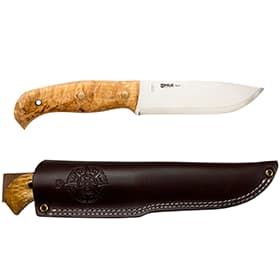 Helle Nord Knife
$354.00 - $363.50coec choice
Helle Nord Knife
$354.00 - $363.50coec choice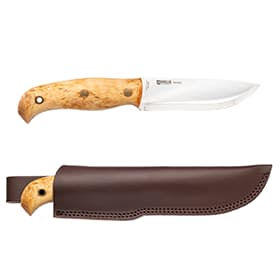 Helle Nordlys Knife
$304.25 - $317.00coec choice
Helle Nordlys Knife
$304.25 - $317.00coec choice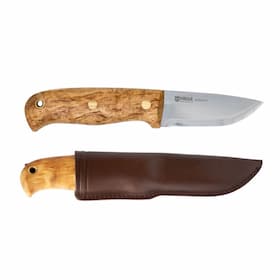 Helle Wabakimi Knife
$245.50
Helle Wabakimi Knife
$245.50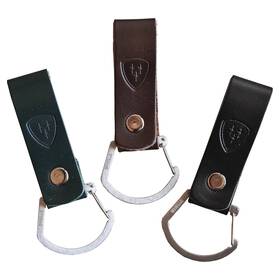 Helle Belt Clip
$32.25
Helle Belt Clip
$32.25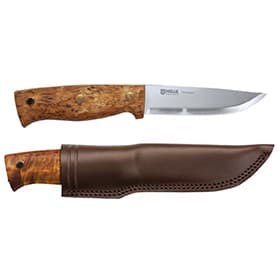 Helle Temagami Knife
$267.00 - $275.00
Helle Temagami Knife
$267.00 - $275.00 Helle Gaupe Knife
$177.50 - $192.50
Helle Gaupe Knife
$177.50 - $192.50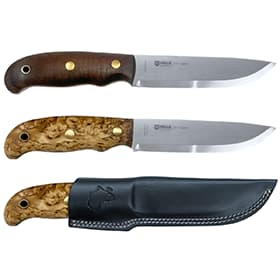 Helle Didi Galgalu Knife
$334.25 - $341.25
Helle Didi Galgalu Knife
$334.25 - $341.25 Helle GT Knife
$234.00 - $245.25
Helle GT Knife
$234.00 - $245.25 Helle Harding Bushcraft Knife
$219.25
Helle Harding Bushcraft Knife
$219.25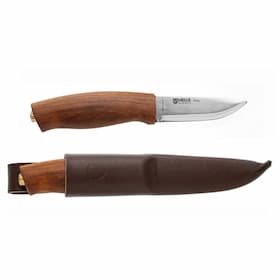 Helle Skog Knife
$136.00
Helle Skog Knife
$136.00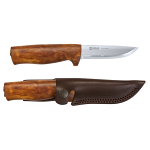 Helle Fossekallen Knife
$145.50 - $147.50
Helle Fossekallen Knife
$145.50 - $147.50 Helle Fjellkniven Knife
$154.00 - $167.50
Helle Fjellkniven Knife
$154.00 - $167.50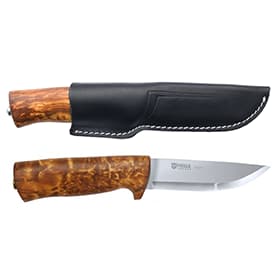 Helle Eggen Knife
$153.75 - $168.50
Helle Eggen Knife
$153.75 - $168.50 Helle Sigmund Knife
$225.00
Helle Sigmund Knife
$225.00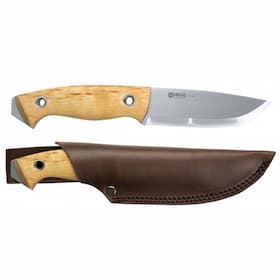 Helle Utvaer Knife
$299.25
Helle Utvaer Knife
$299.25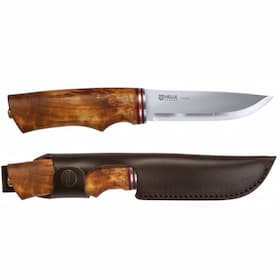 Helle Futura Knife
$199.00
Helle Futura Knife
$199.00 Helle Tollekniv Knife
$106.25
Helle Tollekniv Knife
$106.25 Helle Gro Knife
$115.50
Helle Gro Knife
$115.50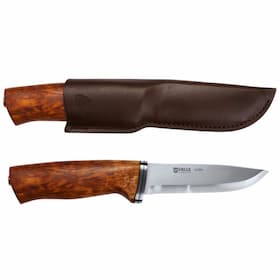 Helle Alden Knife
$183.50
Helle Alden Knife
$183.50 Helle Jegermester Knife
$195.50
Helle Jegermester Knife
$195.50 Helle Folkekniven Knife
$124.25
Helle Folkekniven Knife
$124.25 Helle Arv Knife
$225.50Sold Out
Helle Arv Knife
$225.50Sold Out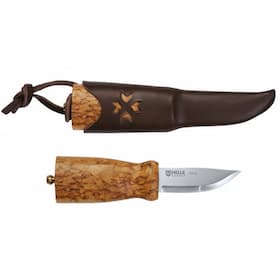 Helle Nying Knife
Helle Nying Knife
About Helle Bushcraft & Outdoor Knives
General use outdoor and bushcraft knives are defined by a few factors: the type of steel used, blade grind, blade geometry, and blade tang.
All of Helle’s general use outdoor knives feature either Helle’s triple laminated stainless or carbon steel, Alleima 14C28N or 12C27 stainless steel or Uddeholm Sleipner carbon steel. While both carbon and stainless steel have their devotees, stainless blades require less field maintenance, are much less susceptible to rust, and tend to hold their edges for longer periods of time.
Scandinavians have been using knives for over a thousand years, and in that time have settled upon the flat, or “Scandinavian” grind as the blade grind of choice. Consisting of a single bevel face out to the blade edge, and featuring no secondary bevel, a Scandinavian grind provides a very keen edge that exhibits good strength and is highly multi-purpose in design: one can use it for utility purposes (cutting rope or line), food prep, skinning and preparing game, or for fine shaving or carving of wood. While other grinds do offer greater strength (convex for instance - used on axes), they do not offer the same ability to do very fine slicing or shaving and finesse work - very useful when making feather sticks or removing splinters. The other advantage of the Scandinavian grind is that it is very easy to sharpen: the blade is simply tilted flat onto a sharpening stone along the blade bevel to find the angle, and to begin restoring the edge. No use of jigs or other sharpening implements are required, as there is only one angle to accomodate. This makes sharpening simple and straightforward, and in-the-field sharpening highly useful and functional.
Helle’s blades feature either full tangs or stick (also called “rat tail”) tangs. There are advantages and disadvantages to both. Full tangs offer the greatest strength and rigidity while using the knife during heavy work. “Batonning” (the practice of splitting wood popular with some outdoors people) can be done with full tang knives, but must be done carefully, due to the large impact force and required pounding on the knife - which can lead to broken handles and blades. While more robust, full tang blades are much heavier than their stick tang counterparts. Stick tangs make for lighter, more agile and nimble knives that are highly functional for general outdoor use (including processing small sections of dry wood into kindling), but lack the robustness for use when striking or pounding is involved - a job best suited to an axe.
